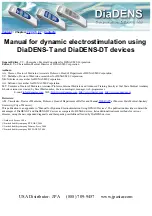
premierpet.com
19
11. When testing is complete reconnect and verify that the boundary wire is plugged into the Loop
Terminals on the surge protector and the transmitter is connected to the surge protector.
12. Return the boundary width control knob setting to the position noted earlier.
13. Repeat the boundary width testing from Step 6 on Page 16 until you achieve the desired boundary
width between 12 to 20 ft.
Wire Break Location Test
The following lists identify the common locations where wire breaks occur. Please inspect these areas
for signs of damage. Wire breaks in the twisted pair are commonly found:
1. At the wire exit point of the house
2. Where the twisted pair of wire enters the ground from the house, usually caused by string trimmers
3. Where the wires cross sidewalks or driveways due to edging and string trimmers
4. Around landscaping and flower beds due to digging or working up the soil
Wire breaks in the boundary wire are commonly found:
1. In aerated lawns
2. Where the wires cross sidewalks or driveways due to edging and string trimmers
3. Around landscaping and flower beds due to digging or working up the soil
4. At wire splices where Gel-filled capsules have not been installed
5. At wire splices without reinforcements knots (refer to Figure 3E)
If you still cannot find the break in the boundary wire, there are 2 options for locating it:
Option 1:
It is recommended to contact the Customer Care Center to purchase a Wire Break Locator
(RFA-450).
Option 2:
Follow the procedure below:
1. Unplug the fence transmitter.
2. Connect both ends of your twisted boundary wire to one Loop Terminal
on the surge protector.
3. Measure and cut a Test Wire which is half the length of your total
boundary wire footage.
4. Connect one end of Test Wire to the other Loop Terminal on the
surge protector.
5. Locate the halfway point of your boundary and cut the boundary wire.
6. Splice the other end of the Test Wire to either side of your boundary wire
where you cut it in half.
7. Plug in the fence transmitter and check the loop indicator light. If the
loop indicator light is ON, you can assume the break is in the other half of
the boundary wire.
8. If the loop indicator light did not come on, you may assume there is a break in this portion of the
boundary wire. However, there is a small chance of having more than one break in your system. Be
sure to check both halves of your entire loop.
9. Replace the damaged boundary wire with new boundary wire.
10. Reconnect the boundary wire to the surge protector.
11. Check the loop indicator light. If the loop indicator light is ON, test the system with the receiver collar.
Test
Wire






































